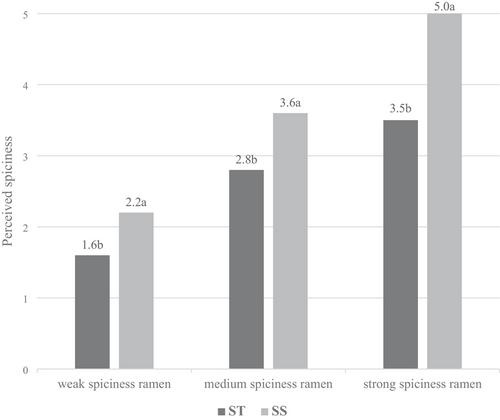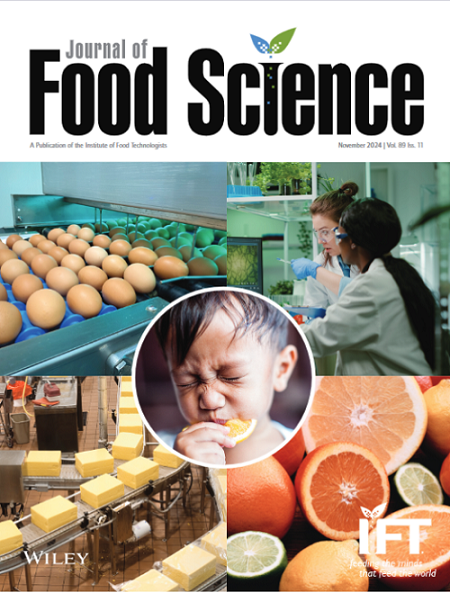Spicy or Not? Exploring Kimchi's Spiciness Perception Across Spicy Food Tolerant and Sensitive Groups
Abstract
ABSTRACT
This study investigated the perception of spiciness in kimchi among individuals classified as either the spicy food-tolerant group (ST) or the spicy food-sensitive group (SS). Four types of commercially available kimchi with varying levels of capsaicin content were analyzed. Participants were segmented into the ST and SS groups using hierarchical cluster analysis based on their spiciness perception of ramen samples with different capsaicin intensities. Sensory evaluations of kimchi included assessments of appearance, color, crispness, spiciness, saltiness, and umami using a nine-point hedonic scale and a five-point just-about-right (JAR) scale. Notably, spiciness exhibited significant differences in both liking and JAR ratings (p < 0.001). A direct comparison of spiciness liking for K4 showed that SS participants had significantly lower preference compared to ST participants. Open-ended responses revealed that 34.1% of ST participants found K4's spiciness “just about right,” whereas 83% of SS participants found it too strong. The ST group exhibited higher spiciness tolerance and preference, particularly for strongly spiced kimchi, whereas the SS group preferred milder kimchi and rated the spiciest samples poorly. These findings underscore the importance of individual and cultural factors in sensory evaluation and provide insights for developing kimchi products tailored to diverse consumer preferences.
Practical Applications
The findings of this study reveal that individual differences in spiciness perception and tolerance significantly influence kimchi preferences. This information can guide the development of customized kimchi products catering to varying consumer needs and global markets, thereby enhancing product acceptance and marketability.







 求助内容:
求助内容: 应助结果提醒方式:
应助结果提醒方式:


